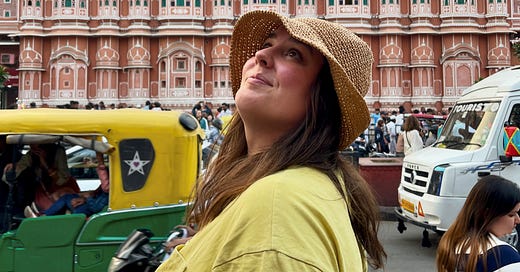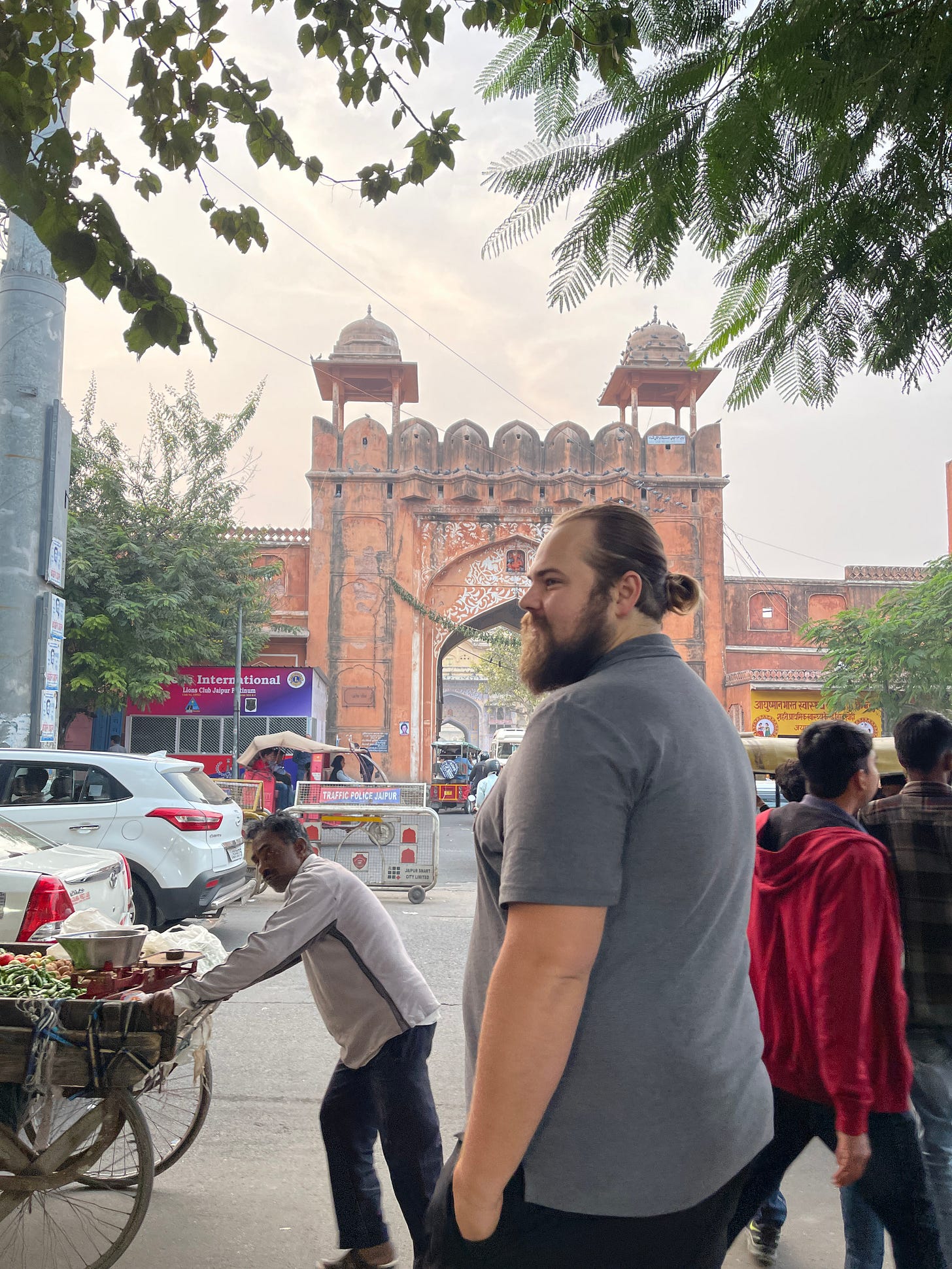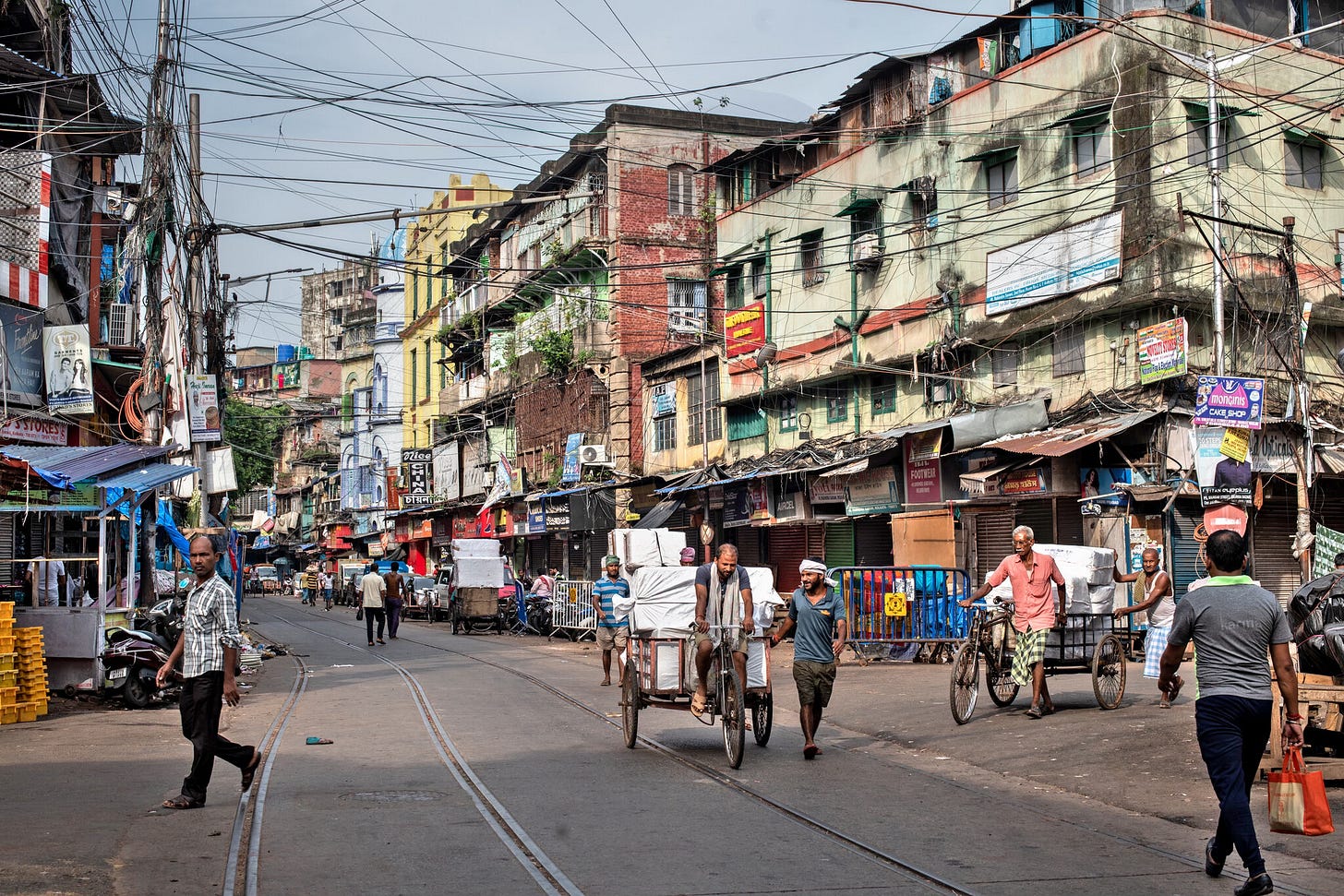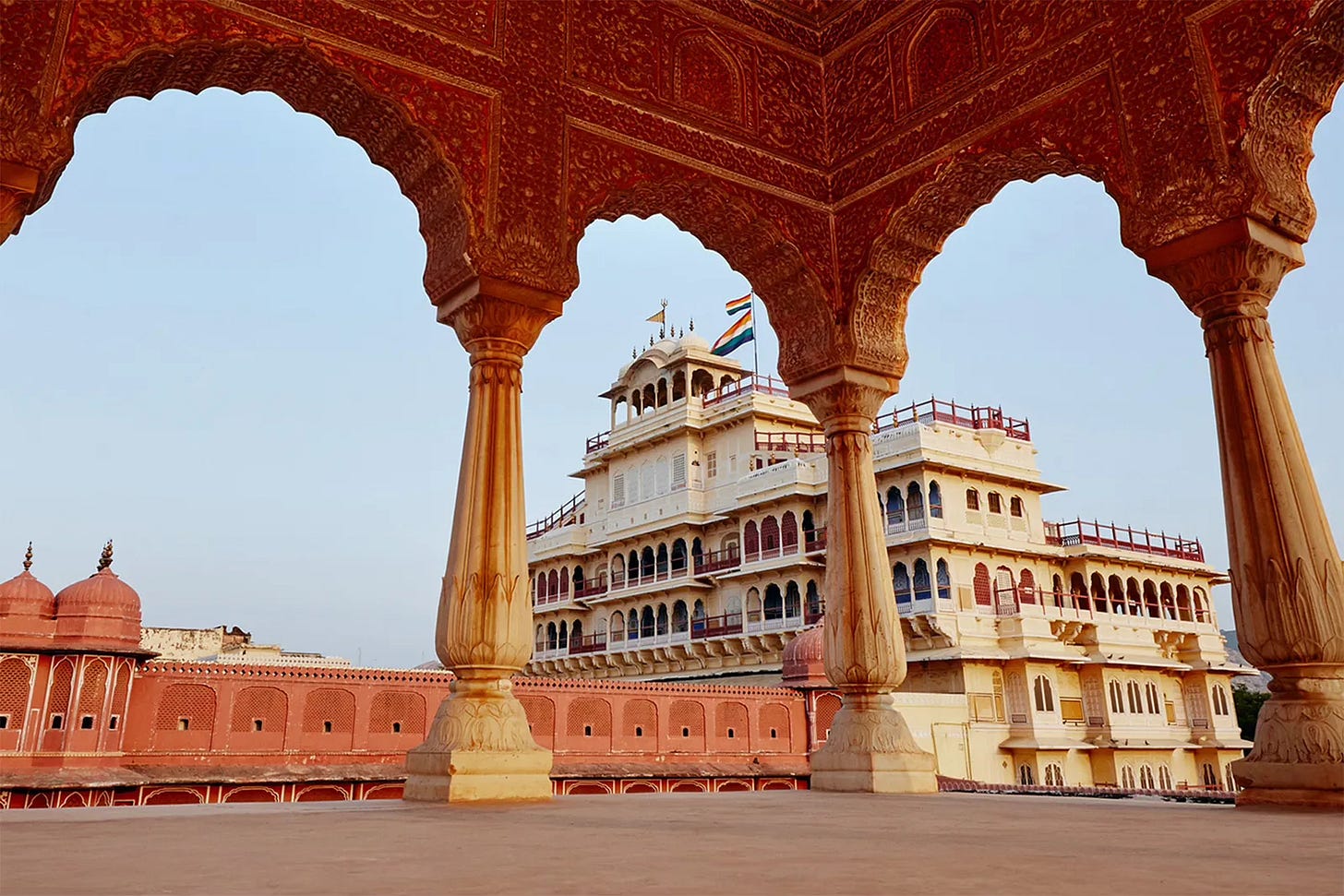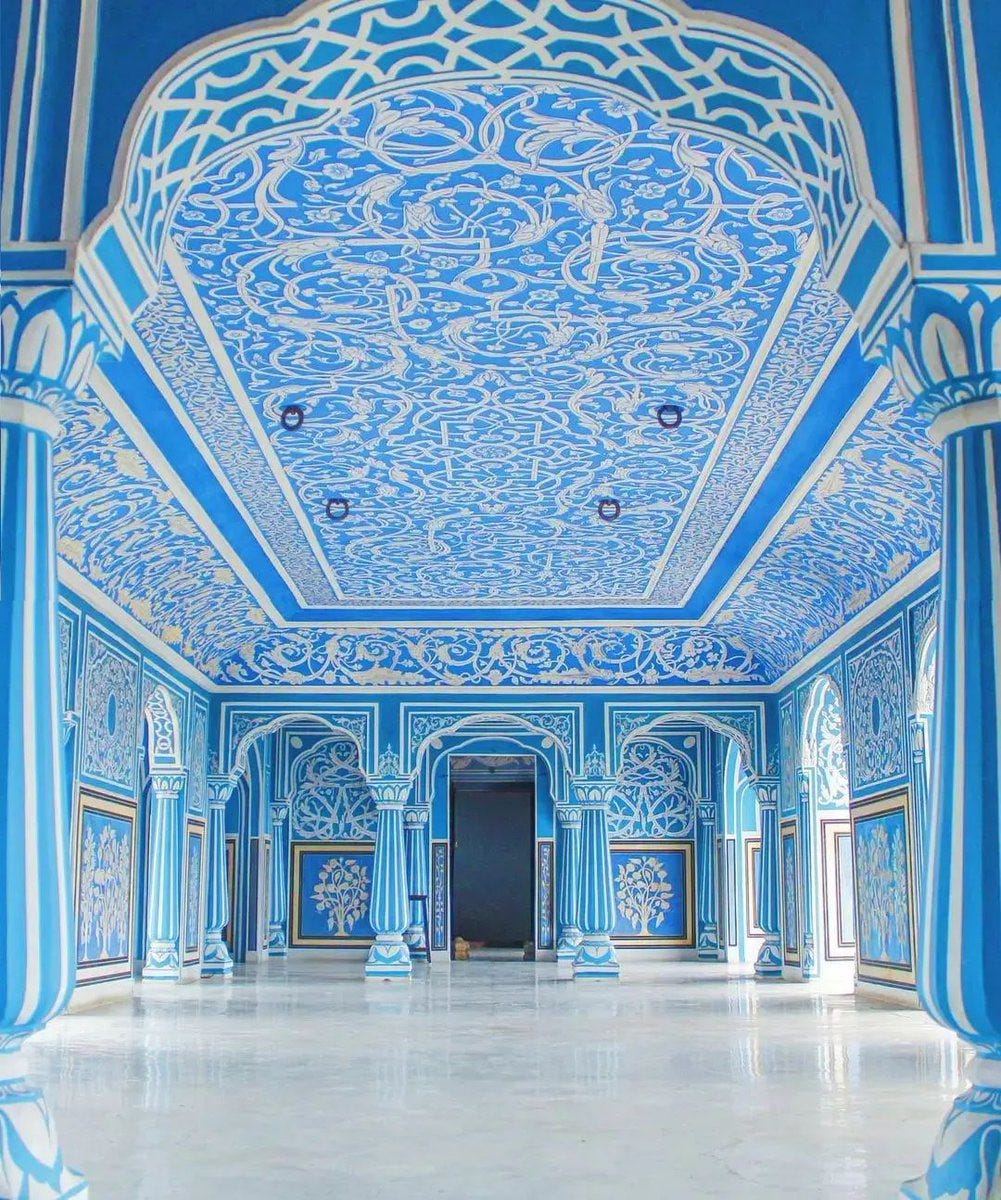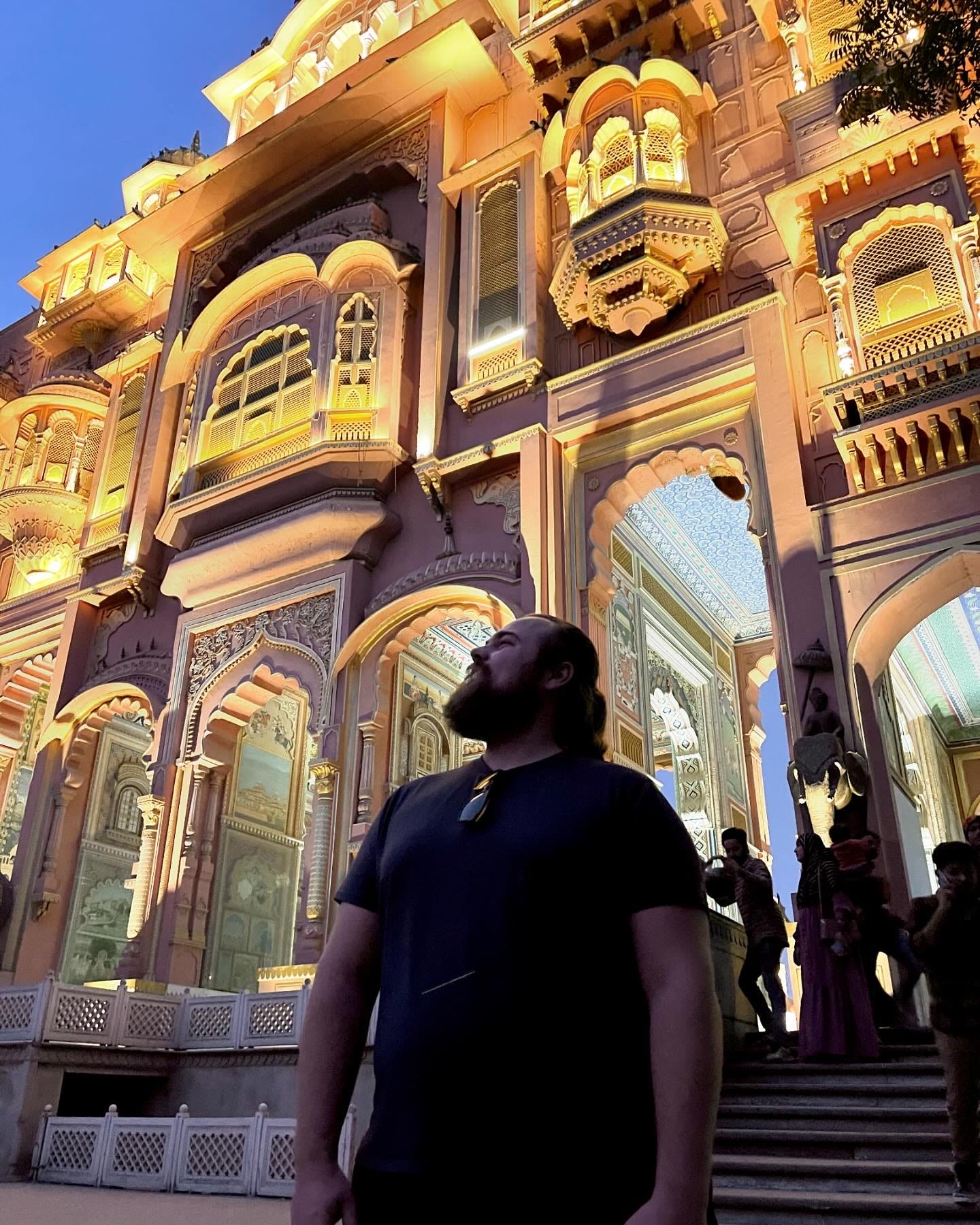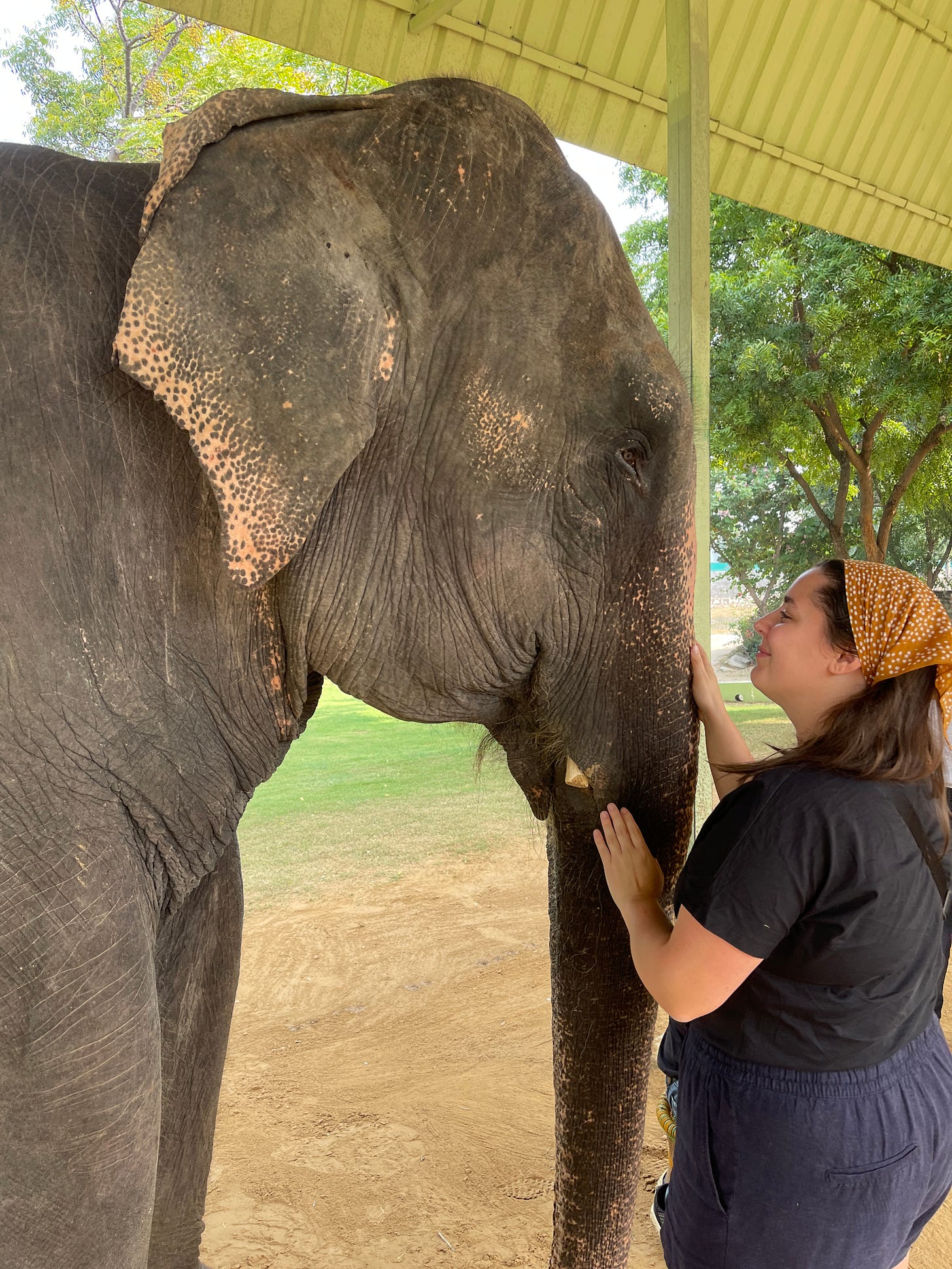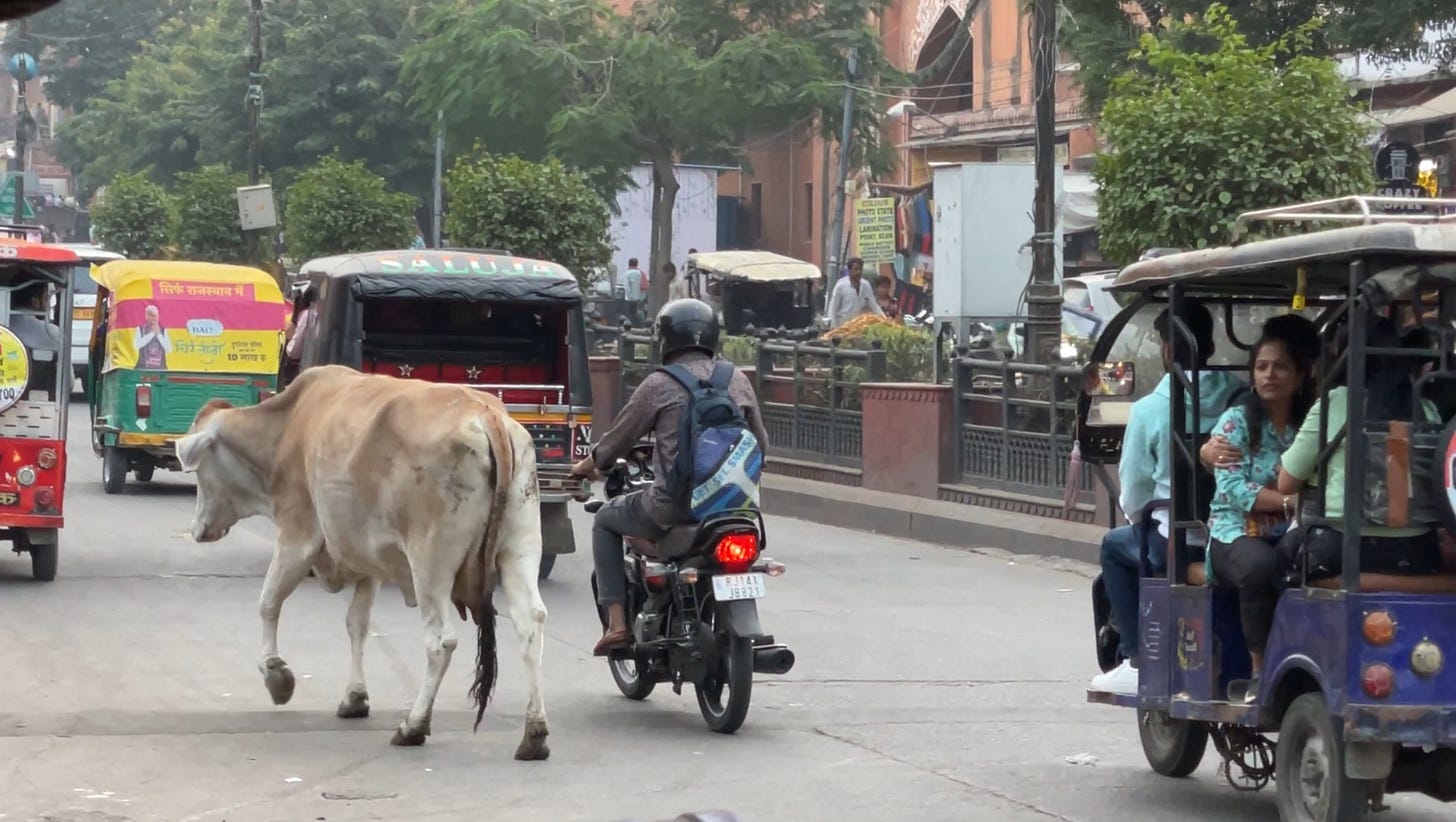During our time in India, we had countless “I can’t believe we are actually in India” moments!
One of our favorite aspects of the journey so far has been the fact that every new destination seems to be one step further outside of our comfort zone.
With that said, India was at least 3 to 4 steps!
It was extremely apparent that we were outsiders.
After traveling to 37 countries, we are no strangers to standing out a bit. The fact that we often carry a camera around and film ourselves talking in public makes us stand out in countries we might otherwise be able to blend in.
However, it was not very difficult for locals to notice that we were visitors in India!
Everything from our clothes to our mannerisms to our height to the color of our skin made it blatantly obvious that we were not from around these parts.
Despite being admittedly easy targets for scams and pickpockets, we saw far more examples of good-natured hospitality and kindness than anything nefarious.
This is definitely a win for the optimistic “most people are good people” point of view!
With that said, we constantly had to make sure we were aware of our surroundings.
I’ll never forget the moment when our tuk-tuk driver yelled in shock as I pointed in the direction we were trying to go from the backseat. Turns out it is generally a very bad idea to have limbs sticking outside of the vehicle, even for a second!
The chaotic and unpredictable traffic patterns make it quite dangerous because you never know when a motorbike might zoom past while being only a few inches away.
Moments like this popped up a handful of times throughout our visit. It was truly a learning experience in every way!
One discovery that still amazes us to this day is the incredible amount of cultural diversity that exists within India’s own borders.
I will admit that I have always thought of India as one place, one people, and one culture. It turns out that this could not be further from the truth!
The 29 states of India are all quite different from one another. In fact, it wasn’t until British colonialism that India became one massive nation. There are even a handful of nations that have broken off completely from what was once British India. This list includes Pakistan, Bangladesh, Myanmar, and Sri Lanka.
Even within the borders of modern-day India, there is a wide spectrum of foods, cultural backgrounds, religions, and even languages in some cases!
The first time we were able to experience this firsthand was when we said farewell to the massive metropolis of Mumbai and made our way to the city of Jaipur.
Known as “The Pink City'“ for reasons I will soon explain, Jaipur is the capital city of the state of Rajasthan in the Northwest of India.
Rajasthan is often considered one of the cultural powerhouses of the Indian subcontinent. The signature architectural design, unique cuisine, historical significance, and famous colorful textiles are just a few examples of what makes Rajasthan special.
Jaipur intrigued us for many reasons, but the architecture was absolutely chief among them!
The crowning jewel of Jaipur’s impressive architectural collection is the Hawa Mahal located in the bustling city center.
This palace was originally built in the 17th century, and the iconic eastern facade is made purely of red and pink sandstone.
Watching the chaotic traffic patterns whizz past this spectacular structure was mesmerizing. We actually just stood there and took it all in for at least 15 minutes!
It was a fascinating scene. Something so uniquely beautiful, standing tall and stoic for centuries, while the city traffic continues to buzz past in a colorful blur.
However, if you think the outside of this palace is beautiful, check out the inside!
The stark difference in color scheme and overall aesthetic between the interior and exterior was so intense that we could not help but marvel at such an incredible architectural achievement.
Across the street from the Hawa Mahal is a collection of 2nd-floor cafés that have full domain over the best unobstructed views of the palace.
Since tourists flock to these establishments mainly to get their Instagram pictures, the Wind View Café has a policy where you are only permitted a photoshoot if your meal is finished and your bill is paid. Smart!
While the Hawa Mahal is undoubtedly the most iconic building, Jaipur boasts a collection of awe-inspiring architectural gems that is far too extensive to fit into a single newsletter. However, another one that I definitely want to mention is the Jal Mahal.
This unique palace sits in the middle of a small lake a few miles outside of the central city.
There are no tours of the interior, but it can be admired from multiple directions along the shore.
Both the water and the surrounding mountains create quite a backdrop for this 17th century relic. The design has many similarities to the Hawa Mahal and other famous structures around Jaipur, including the main material of sandstone.
This was the preferred building block of the royal Maharaja Sawai because it was abundant in the region. However, its durability and unique appearance made it an integral aspect of Rajasthani royalty.
So this is why Jaipur is called “The Pink City” then, right? I haven’t forgotten that I promised an explanation on that nickname!
Well actually, the color pink is associated with hospitality in India. In 1876, Queen Victoria and an entire royal delegation made the long journey from London and paid a visit to Jaipur.
Maharaja Ram Singh, the leader of Rajasthan at the time, requested that the whole city be painted pink to welcome the royal delegation in style.
Prince Albert was credited with coining the actual nickname. He referred to Jaipur as “The Pink City” several times in formal settings, and eventually the name stuck!
While sandstone does have a reddish-pink hue all by itself, the majority of the buildings in central Jaipur are still painted pink to this day.
It was definitely the most unique aesthetic we had ever seen in a city. There aren’t a lot of places that can be compared to Jaipur, even within India!
While we thoroughly enjoyed exploring the city, our most memorable experience was visiting a well-renowned elephant sanctuary known as Elefantastic.
During the planning phase of our Indian adventure, we became extremely excited about the idea of interacting with elephants.
With that said, we wanted to make sure that it was in the most ethical way. There are unfortunately a lot of examples of animal abuse for the sake of tourism.
Elefantastic goes out of their way to rescue elephants from unfortunate circumstances and offer them a peaceful life.
We got to spend time with a beautiful 54-year-old female Indian elephant named L’Pinky! At least, we think that’s how you spell it 😂
We learned so much about her behavior, their sleep patterns, what they eat, the astonishing volume that they consume per day, and even their sacred standing within the Hindu religion.
Elephants have always been revered and celebrated in Rajasthan. They are a symbol of loyalty, power, wisdom, and fertility.
There is an ancient tradition of decorating elephants with bright colors on Hindu holidays to protect them from darkness.
We got to try our hand at painting L’Pinky in the traditional style! Our creations weren’t nearly as intricate as the gorgeous designs on the elephants at festivals, but it was a really fun way to learn about the tradition!
After spending well over an hour with L’Pinky and even getting to walk around the farm with her, we were invited into the owner’s home where his wife served us a traditional Rajasthani meal.
As we enjoyed a delicious lentil curry accompanied by homemade chapati bread, we couldn’t help but smile! Even though we were 7600 miles from home in a completely unfamiliar place, there is just something so comforting about a home-cooked meal.
Our time in Jaipur made us realize that we were never going to get used to India. It is far too much of a learning curve for a visitor to ever truly become familiar.
In Mumbai, we experienced the beautiful chaos of Diwali, the ecstasy of a Cricket World Cup match, and the pulsating energy of one of the largest cities in the world.
In Jaipur, we saw cows roaming free in the streets, monkeys scaling the walls of buildings, and some of the most awe-inspiring architecture we have ever laid eyes on.
Both were transformative experiences, but when we really think about it, they could not have been more different from one another!
One of the main reasons we are so passionate about travel is because it provides endless opportunities for growth and discovery. Our first 8 days in India did not come without challenges.
We had to adjust our standards of comfort. We had to embrace the intensity of the sensory input we were taking in. We had to open our minds to a world we didn’t entirely understand.
Looking back on it now, I can honestly say that going to India was one of the defining moments of our travels.
Our next destination after Jaipur was located in the Indian state of Uttar Pradesh to the east of Rajasthan. More on that in the next one!

